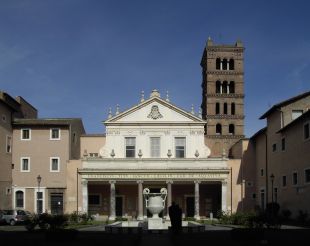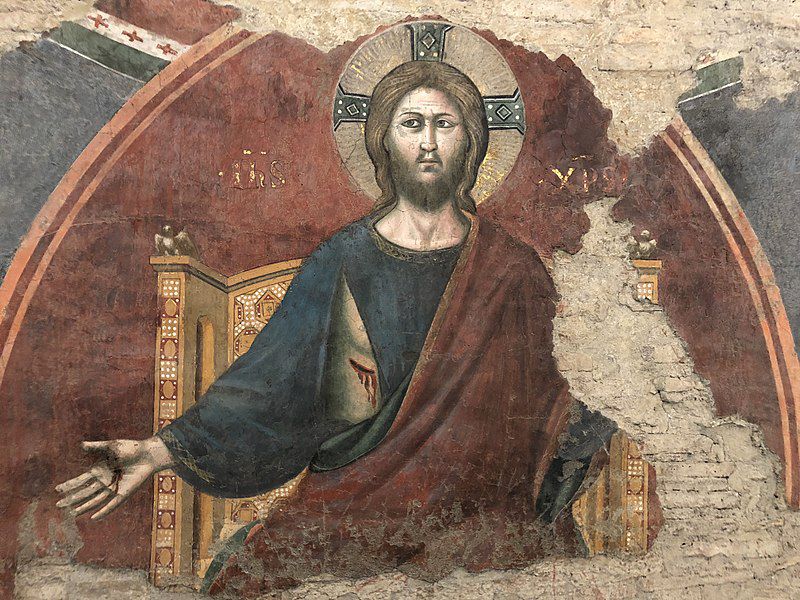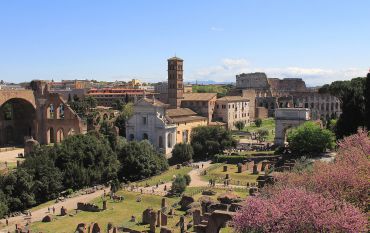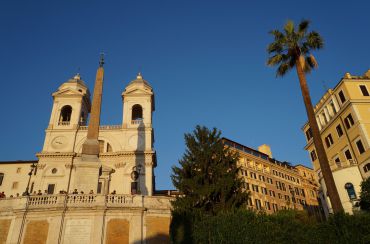Basilica Santa Cecilia in Trastevere, Rome
The Basilica of Saint Cecilia in Trastevere or Santa Cecilia in Trastevere (Basilica di Santa Cecilia in Trastevere) is a medieval Catholic church in the center of Rome. It is very beautiful and cozy outside, and inside it is full of ancient frescoes. In addition, there is also a small excavation zone, and the remains of a Roman ancient civilization are regularly found here.
History of basilica
The church is dedicated to the holy martyr Cecilia, murdered by Emperor Alexander Severus in 220. She was buried near home by her husband Valerian. Already in the 5th century a small church was built on the same place. In the 9th century, by order of Pope Paschal I, a new basilica was built instead of the old temple. By its structure, it followed the example of Basilica of St. Sabina, which had been built earlier.
In the 12th century, the bell tower and the porch of the temple were completed. And the first serious repairs were carried out in 1599. A sarcophagus with a well-preserved body was found at that time, presumably of Saint Cecilia, which had traces of suffocation on its neck. By decree of Pope Clement VIII, sculptor Stefano Maderno created an exact copy of the body in marble. In 1725, the church was reconstructed: the floor, ceiling and presbytery were redone. At the same time, the architect Ferdinando Fuga also changed the façade of the building, which we see today. Over the next 3 centuries, restorations were carried out 3 more times – in 1823, 1955 and 1980.
Architecture and interior
Today, the visitor sees the wonderful façade of Santa Cecilia in Trastevere in white stone and marble.
- On the first floor there is a portico with a number of columns.
- The second floor is crowned with a triangular gable, with the cardinal coat of arms of Cardinal Francesco Acquaviva d'Aragona, who financed the creation of the façade and courtyard.
A brick tower is behind the church. On both sides, the temple is surrounded by the dwellings of two monasteries – the female Franciscan and male Benedictine. This structure forms a wonderful quiet inner courtyard with lawns and a fountain in the center.
From the inside the basilica has a rather typical plan:
- One nave, separated from the side aisles by two rows of 12 columns.
- The main colour scheme of the interior is white and gold.
- The wooden ceiling is made in the vaulted form, in its center there is a fresco by Sebastiano Conca in 1725.
- The floor is made of marble, the walls of the nave are decorated with various frescoes.
- The apse of the temple is semi-circular, it has preserved some fragments of the original mosaics of the 9th century.
- In front of the nave there is a beautiful high altar. The main relic of the church – a marble replica of the body of Saint Cecilia – is in this niche.
- The fresco cycle by the famous painter Pietro Cavallini is another pride of the temple. This fresco cycle became his most famous creation. They are located in one of the side passages.
Crypt and excavations
Under the church there is a small crypt, where Saint Cecilia was originally buried. In the early 20th century, Cardinal Mariano Rampolla decided to expand the crypt. The excavations were carried out in connection to this. In their course, they found many rooms of the ancient mansion of the 2nd century at a depth of about 5 meters. After a series of research and a long reconstruction, the visitor has a chance to see the Roman mansion, presumably a villa, in a good condition. A beautifully restored crypt leads to it, which, like the church above, simply shines with the decorations.
How to get there
The Santa Cecilia in Trastevere is located in the center of Rome, in the historic area of Trastevere, on Piazza di Santa Cecilia, 22. Nearby there are the Museum of Rome in Trastevere, the famous Tiber Island and several bridges over the Tiber – Palatino, Cestius, Fabricius and Sublicio. In 200 meters there is a bus stop Lgt Ripa/Porto (routes 23, 44, 44F, 280, N11, N19), and in 500 meters – tram stop Trastevere (Mastai), route 8.
Opening hours: every day from 10:00 to 13:00 and from 16:00 to 19:00. The frescoes of Pietro Cavallini can be seen every day from 10:00 to 12:30. Phone numbers for information (+39) 06 5899289, (+39) 06 45492739.
Admission: visiting the basilica itself is free. But for the opportunity to see the frescoes of Pietro Cavallini you will have to pay 2.5 euros. The same amount, 2.5 euros, will be a ticket to visit the excavation zone. Visit information may vary.







